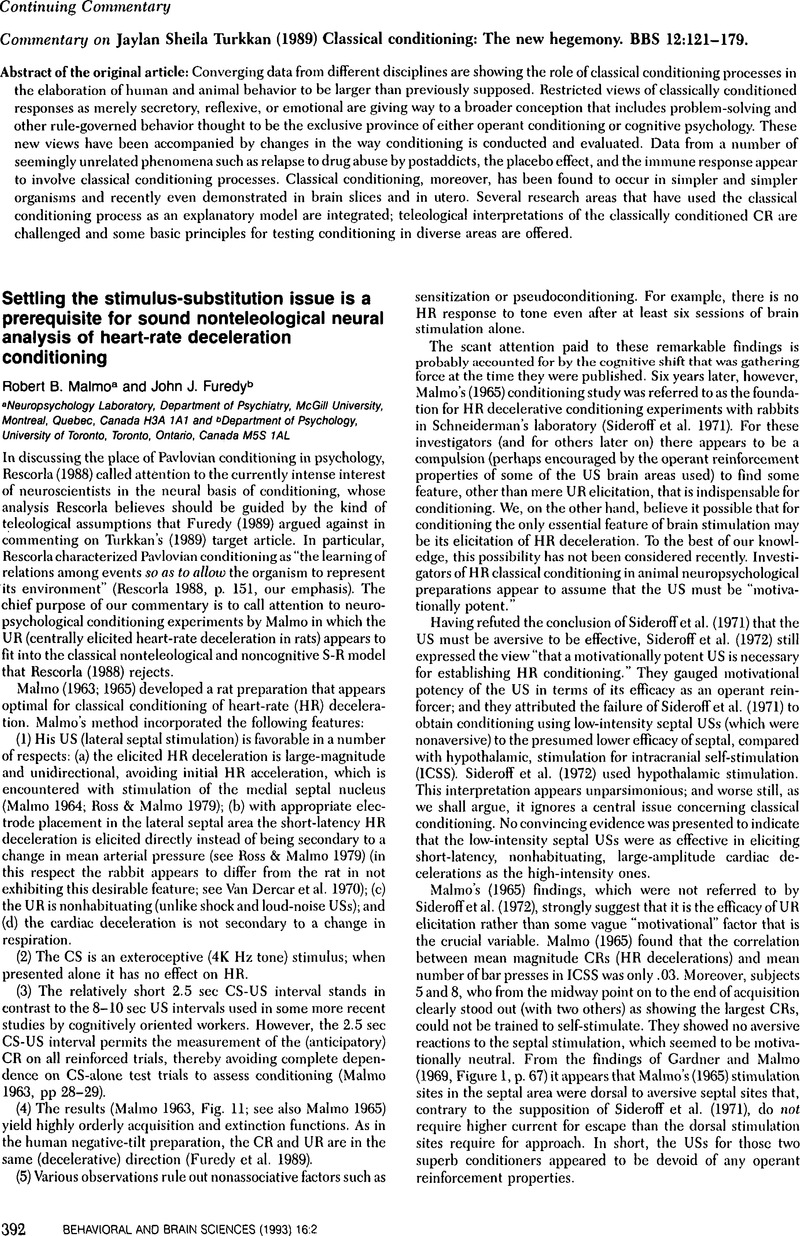Crossref Citations
This article has been cited by the following publications. This list is generated based on data provided by Crossref.
Tonneau, François
and
Sokolowski, Michel B. C.
1997.
STANDARD PRINCIPLES, NONSTANDARD DATA, AND UNSOLVED ISSUES.
Journal of the Experimental Analysis of Behavior,
Vol. 68,
Issue. 2,
p.
266.
Tonneau, François
Abreu, Nadjelly Kim
and
Cabrera, Felipe
2004.
Sitting on the word “chair”: Behavioral support, contextual cues, and the literal use of symbols.
Learning and Motivation,
Vol. 35,
Issue. 3,
p.
262.
Tonneau, François
and
González, Carmen
2004.
FUNCTION TRANSFER IN HUMAN OPERANT EXPERIMENTS: THE ROLE OF STIMULUS PAIRINGS.
Journal of the Experimental Analysis of Behavior,
Vol. 81,
Issue. 3,
p.
239.
Tonneau, François
Arreola, Fara
and
Martínez, Alma Gabriela
2006.
FUNCTION TRANSFORMATION WITHOUT REINFORCEMENT.
Journal of the Experimental Analysis of Behavior,
Vol. 85,
Issue. 3,
p.
393.
Amd, Micah
de Almeida, João H.
de Rose, Júlio C.
Silveira, Carolina C.
and
Pompermaier, Henrique M.
2017.
Effects of orientation and differential reinforcement on transitive stimulus control.
Behavioural Processes,
Vol. 144,
Issue. ,
p.
58.
Verdú, Ricardo de Pascual
and
Sánchez, Carolina Trujillo
2018.
Estudio de la relación entre las verbalizaciones motivadoras y el seguimiento de instrucciones en la terapia psicológica.
Clínica Contemporánea,
Vol. 9,
Issue. 2,
p.
1.
Amd, Micah
de Oliveira, Marlon A.
Passarelli, Denise A.
Balog, Livia C.
and
de Rose, Julio C.
2018.
Effects of orientation and differential reinforcement II: transitivity and transfer across five-member sets.
Behavioural Processes,
Vol. 150,
Issue. ,
p.
8.



